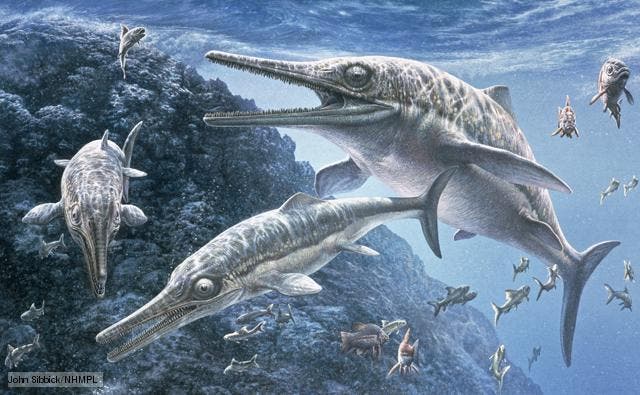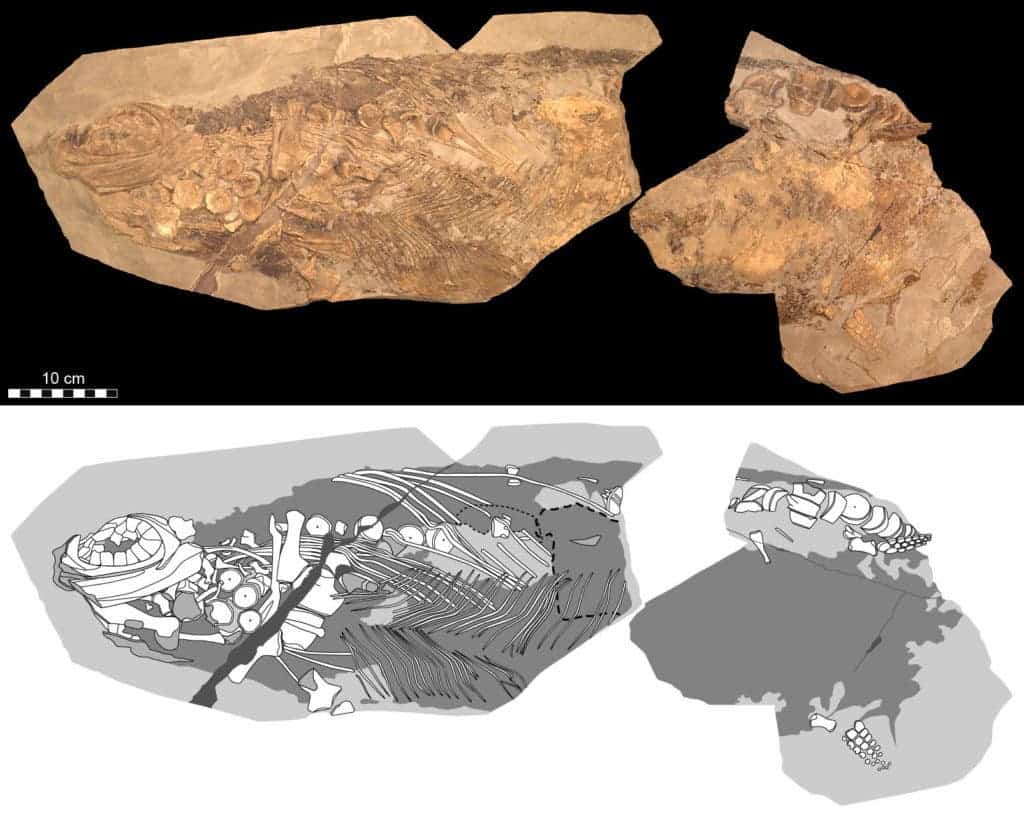Researchers have identified a well-preserved ichthyosaur specimen, complete with skin and, most remarkably, a blubber. The incredible discovery suggests that the 180-million-year-old sea creature may have been warm-blooded.

“Ichthyosaurs are interesting because they have many traits in common with dolphins, but are not at all closely related to those sea-dwelling mammals,” said co-author Mary Schweitzer, professor of biological sciences at North Carolina State University and visiting professor at Lund University, Sweden. “We aren’t exactly sure of their biology either. They have many features in common with living marine reptiles like sea turtles, but we know from the fossil record that they gave live birth, which is associated with warm-bloodedness. This study reveals some of those biological mysteries.”
Ichthyosaurus (“fish lizard” in Greek) was a large marine reptile which was perfectly adapted to ocean life. Its dolphin-like body featured a small sail-fin on its back and advanced flippers that allowed the creature to swim at high speeds, perhaps as fast as 33 km per hour (21 mph). The reptile could grow to 1.8 meters (6 feet) in length and weighed around 90 kg (200 pounds).
Paleontologists have been lucky enough to find an abundance of ichthyosaur fossils. Thanks to these findings we’ve come to know that the ancient sea creature had large ear bones that allowed it to locate both prey and predators, or that it used to give birth to live young instead of laying eggs as a fish would. Eventually, Ichthyosaurus was outcompeted by the arrival of better adapted marine animals such as pliosaurs and plesiosaurs.
Some scientists have compared ichthyosaurus with modern toothed whales, based on estimates of their swimming speed, which would imply they were warm-blooded. It seems that they were on to something since a new study, which described a wonderfully preserved specimen, identified a blubber.
The blubber is a thick layer of vascularized adipose tissue under the skin of modern marine mammals, such as cetaceans, pinnipeds, and sirenians. It basically insulates vital organs, keeping them warm while in cold climates. Its discovery in an ichthyosaurus suggests that the ancient marine reptile was also warm-blooded, an extremely rare occurrence among reptiles. Modern leatherback sea turtles also have a blubber, which along with other measures for heat retention and control, allow it to venture into very cold waters.
“This is the first direct, chemical evidence for warm-bloodedness in an ichthyosaur, because blubber is a feature of warm-blooded animals,” Schweitzer says.
The Stenopterygius ichthyosaur specimen was discovered in Holzmaden quarry, Germany. For years it was stored at the Urweltmuseum Hauff in Germany, until researchers at Lund University in Sweden examined it.

Besides the blubber, the research team was also able to trace the animal’s flexible skin. Microscopic analysis of this tissue suggests that ichthyosaur was countershaded, meaning it had a dark upper surface and light belly. This camouflage pattern would have helped the animals avoid Jurassic predators such as flying pterosaurs, attacking from above, and pliosaurs from below.
“Both morphologically and chemically, we found that although Stenopterygius would be loosely considered ‘reptiles,’ they lost the scaly skin associated with these animals—just as the modern leatherback sea turtle has,” Schweitzer says. “Losing the scales reduces drag and increases maneuverability underwater.
It’s a bit too early to claim that the Early Jurassic sea creature was warm-blooded, though. But since ichthyosaur fossils are very common, we could have a confirmation once more specimens showing blubber are found.
The findings appeared in the journal Nature.


